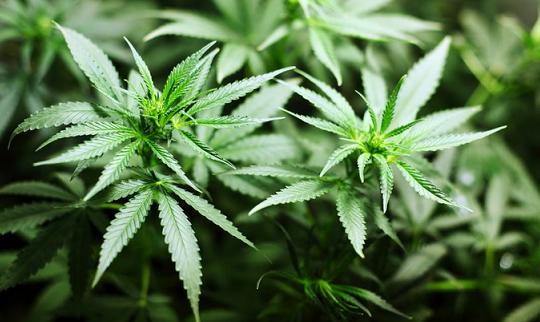
When Pot was just Pot: When we were in our college years, back in the sixties and seventies, we had no idea what we were smoking. Today we know there are well over 100 strains of marijuana. The differences are many and the effects are very diverse. Today we know there are two basic families; Indicas and Sativas, and then we have strains that are hybrids of Indica and Sativa. We saw a lot more of the Indica dominant plant back in the day, and mostly it mellowed us out, and often put us to sleep. For me pot didn’t make me want to party, just mellow with intimate friends. Occasionally, we’d stumble across a “Lid” of what we affectionately called giggle-weed (Sativa). The Sativa (giggle-weed) made us more euphoric and socially outgoing, but for some more anxious individuals, or if used in an uncomfortable environment, a Sativa could make one anxious or even a bit “paranoid.” It is not unusual for our minds to get busy thinking; often introspectively about every possible facet of our lives and even the essence of our being. Sometimes the perspective we gain allows us to stand back from our lives to see a different view of ourselves, our families, and friends.
Health Benefits: 72% of the 50,000+ Arizonan’s with Department of Health Services medical marijuana cards, have qualified for their cards for pain management. The others have qualified under one of the other qualifying conditions including: cancer, nausea, Crohn’s disease, MS, Parkinson’s, epilepsy, cachexia/wasting syndrome, HIV/AIDS, hepatitis C, muscle spasms, glaucoma, and Alzheimer’s (ADHS March 2014 Report). Other benefits reported by a recent survey of cannabis consumers included these same conditions, but 25% also reported using cannabis for insomnia, 24% stress, 20% anxiety, 10% depression, 9% Appetite, and 3% PTSD (Leaf Science 2013). Although the information quoted above is new data, cannabis has been used medically around the globe for 5,000 years. Cannabis was a significant part of the American Pharmacopeia up until 1941. Today 21 States and The District of Columbia have joined over 30 Countries world-wide in recognizing medical benefit and/or making cannabis a legal medical alternative, or outright decriminalizing this natural herb.
Science and the Human Body: Most pharmaceutical agents work by interfering with cell function, blocking enzymes, up-regulating or down-regulating receptors or through suppression. We naturally have a few types of receptors that are directly stimulated by plant elements found in our environment (ex: nicotine, opium, cannabis). The benefit is that we are not trying to force the body to respond, when these receptors are triggered, we are asking the body to do what it already knows how to do! Unlike nicotine and opium, cannabis is not nearly addictive. In fact studies have proven that only 10% develop an addiction for cannabis, however withdrawal is similar to caffeine withdrawal. If you smoked a lot and then quit cold turkey, you might be irritable for a couple of days.
Pain Management is by far the most common use for medical cannabis, and there is now a great deal of research available to support why cannabis is so effective for relieving pain. Many find that they can reduce their dependence on prescription opiate medication by introducing moderate amounts of medical marijuana. By slowing introducing small amounts of cannabis I know of many patients who have lessened and sometimes even eliminated their prescription pain relievers completely, especially among aging adults. Seniors should highly consider using medical marijuana as a safe form of pain management in replace of their traditional pharmacueticals. d
Strength and Titration: In the old days “Lids” contained about 1.5 ounces of “pot” or about three fingers deep in a sandwich bag that cost somewhere between $15-$20, depending on the origin and quality. Unlike todays ADHS Licensed dispensaries, nobody back in the day tested for purity or potency, so who knew what we were really smoking. Our best guess is that back in the early 1970’s pot, often grown outdoors, would have probably tested somewhere around 4-5% THC.
Today’s indoor or greenhouse hydro farmed medical grade cannabis is usually somewhere between 12-24%, easily 3-4X the strength of old time pot. Today’s more potent and sophisticated hybrid strains require just one or two hits to produce medical benefit, as well as a moderately enjoyable marijuana experience. One or two hits can be equivalent like taking one or two pills of medicine. You wouldn’t take half of the bottle so why would you smoke a whole joint of medical grade cannabis. People shared joints in the sixties and seventies, and the pot was weaker, and many of us still got “too high.” If one wants to equate marijuana use to drinking alcohol, think in terms of use verses abuse. Drinking a glass or two of wine vs. drinking the whole bottle by yourself.
Reefer Madness! So why did the US government ever make cannabis use illegal? Google this subject and you will find that wealthy industrialists were primarily behind the campaign to eradicate hemp. William Randolph Hearst was a major force in politics and print media in his day. He also owned great numbers of timber and paper mills. Hemp paper use was prevalent throughout the U.S. In fact our United States Constitution was written on hemp paper. Hemp paper was cheap to produce and was tough competition to the paper industry. Industrialists harnessing petrochemicals over natural fiber products also jumped aboard the anti-hemp bandwagon (DuPont had just invented nylon rope). Through the Hearst Empires deep and it’s sweeping influence in media and populist politics, William Randolph Hearst was successful in convincing congress to support his mission to eradicate hemp. Prior to the days of television, in the 1920’s Hearst mastered a style of popular “Yellow Journalism. ”He pushed the boundaries of mass appeal for newspapers through bold headlines, aggressive news gathering, generous use of cartoons and illustrations, populist politics, and dramatic crime and human-interest stories to pursue his political agendas. By the mid-1920s he had a nation-wide string of 28 newspapers, in the largest cities from the Los Angeles Examiner, to the New York Daily Mirror, and most major cities in-between. Hearst also owned book and magazine publishing empires including a few brands we still know today including Cosmopolitan, Good Housekeeping, Town and Country, and Harper's Bazaar. Among his other media holdings were two news services, Universal News and International News Service.
William Randolf Hearst also started radio stations including WINS in New York. His influence over American culture was as vast as his wealth and political might. Hearst harnessed his influential in-house marketing talent to create the anti-hemp/anti-marijuana campaign “Reefer Madness” and was successful in convincing many Americans that smoking marijuana would drive them crazy and turn them into sex maniacs. Because marijuana was more popular among artists and jazz musicians, many of them Hispanic or African American, the Hearst marketing machine was able to tap into the existing racism that overwhelmed America in this day. Hearst lobbied congress to repurpose the law enforcement apparatus devoted to the prohibition on alcohol for the eradication of all hemp. Keep in mind that while all marijuana is hemp, not all hemp is marijuana, that distinction remained blurred for congress so that Hearst and his industrially aligned private business interests could use this campaign for industrial market share gains.
Opioid Receptors have been long known in the human body. We have opioid receptors that are directly responsive to drugs derived from the Opium poppy flower (Papaver somniferum) (ex: opium, morphine, oxycodone, dilaudid, heroin). This knowledge has been used to treat pain and cause euphoria using this plant for thousands of years, and still today. Opium Receptors are found in the brain, spine and digestive tract and are very effective for acute pain relief. Unfortunately, they are also very addictive with many side effects. Over dose can be fatal. In fact 16,000 people die every year from Prescription drug opiate overdoes, 1,000 annually in Arizona each year (Arizona Department of Health Services - Average over the past ten years).
Cannabinoid receptors were discovered only in 1987. They are also a part of our human bodies and part of our Endocannabinoid System in the brain that has a physiologic role in appetite, pain-sensation, mood, and memory. Although some associate short-term memory loss with “getting high” on pot, the Head of Neurology at Ohio State University, Dr. Wenk, has been following a group of Baby Boomers who use Cannabis for many years, and he finds that moderate users (one or two hits a day) actually have improved cognitive function and increased executive reasoning skills than those Baby Boomers who do not use cannabis at all. Dr. Wenk, and many other researchers, believe that moderate use of medical cannabis can help our brains repair naturally occurring damage to our brain cells caused from aging.
Does cannabis have side effects? Yes, because there are so many strains to treat a variety of medical conditions and symptoms, there can always be possible side effects. It is important to be candid with your dispensary patient service provider about your present condition to be sure they know how to prescribe the best medicine for your needs. As an example, if one is prone to nxiety and/or panic attacks, we would steer them away from any and all Sativa strains, which can keep us alert and engaged, but can also create anxiety or even paranoia among those who are already anxious. We would never allow a patient with schizophrenia to purchase a Sativa. If one has high blood pressure or other cardiovascular aliment we would suggest Indica cannabis and once again steer clear of sativa strains that might elevate ones metabolism and heart rate a bit.
While Sativa cannabis is very popular for daytime use as it can give us energy and a clearer mind, Indicas are popular for relaxation, night time pain relief and a very effective sleep aid. As a matter of fact if someone is scheduled for surgery, we recommend avoiding cannabis for two weeks prior to sedation for surgery. Other possible side effects come from dosing cannabis in higher forms than are necessary for effective pain relief or for other medical uses. One can experience depersonalization, and even Amotivational syndrome from doing too much too often. Our Patient Education material warns of MMJ abuse and addiction potential which can happen in 10% of our patients, but it is not a severe addiction to break, unlike opiates, which kill 16,000 annually (past ten year average). Nobody has EVER been known to die from using cannabis in any form. Breaking a marijuana addiction is similar to stopping coffee cold turkey. Stopping a prescription drug opiate medication addiction is painful and potentially life threatening.
Cannabis Medicine’s Momentum throughout the world is accelerating as more and more research is published. Dr. Sanjay Gupta, CNN Chief Medical Correspondent agrees that “cannabis does not have a high potential for abuse”, and “there are many legitimate medical applications”. In a 1997 study funded by the National Institute on Drug Abuse (NIDA) and published in the American Journal of Public Health, it was found that no degree of marijuana use had any effect on mortality, continuing with the known fact that cannabis is a non-lethal substance. The American College of Physicians in 2008 wrote an official position paper on medical marijuana, claiming that there is solid research to indicate that marijuana is effective medicine, and urging that we do further research. According to PubMed.gov from the US National Library of Medicine, National Institutes of Health there are over 20,000 published studies or reviews in scientific literature on the cannabis plant, half of those published in last 5 years. Cannabis extracts were found to significant reduce muscle stiffness and pain in patients with multiple sclerosis, according to new study published in the Journal of Neurology, Neurosurgery & Psychiatry. New (2013) National Pain Foundation Research among 1,300 patients with the chronic pain disorder Fibromyalgia rated Medical Marijuana with the only three drugs approved by the FDA for Fibromyalgia: Savella, Lyrica and Cymbalta. 62% felt MMJ was “Very Effective” and another 33% felt MMJ “Helped A Little, “Leaving just 5% saying “MMJ Did Not Help Them At All.” The Three FDA Prescription drugs had the exact opposite ratings, whereas only 8-10% said they were “Very Effective, 22-32% said “Helped A Little, “and 60-68% said the prescription drugs “Didn’t Help At All.”
Talk to Your Doctor about whether or not medical marijuana is right for you. If you have Stand Alone Conditions for the following conditions, you will qualify: Acquired Immune Deficiency Syndrome (AIDS), Agitation of Alzheimer's disease, Amyotrophic Lateral Sclerosis (ALS), Cancer, Crohn's disease, Glaucoma, Human Immunodeficiency Virus (HIV), or Hepatitis C. If you have Conditions Caused by a Chronic or Debilitating Disease you will also qualify for medical marijuana through the Arizona Department of Health Services. Conditions Caused by a Chronic or Debilitating Disease include; Severe and Chronic Pain, Cachexia or Wasting Syndrome, Severe Nausea, Seizures including those characteristic of Epilepsy, Severe or Persistent Muscle Spasm including those characteristic of Multiple Sclerosis. A 2012 survey from the New England Journal of Medicine found that 78% of all Medical Doctors will recommend MMJ to patients with cancer, and many more are recommending patients to MMJ for a variety of other conditions, as listed above. While many doctors do not write MMJ certifications, they will give you supporting medical records and suggest you see an MMJ certification center or naturopathic physician to become certified through the State of Arizona for MMJ. The Arizona Department of Health Service Medical Marijuana Certification process is all on-line, so be sure that the naturopath or certifier enters the data into the ADHS website for you, as it will take them just a few minutes, but might take you far longer to figure it out if you have never used the system before.
The cost of your State issued card from The Arizona Department of Health Services for an annual medical marijuana card is $150, or $75 for SNAP Patients. In addition to the state fee, you will also have to pay the naturopath or certification company somewhere around $150 to review your medical records and perform your medical certification service. The cost of medical cannabis will vary based on the strains, dosage, and method of consumption one uses.


Comments